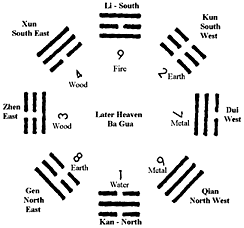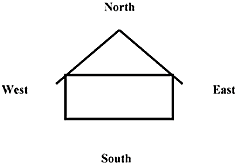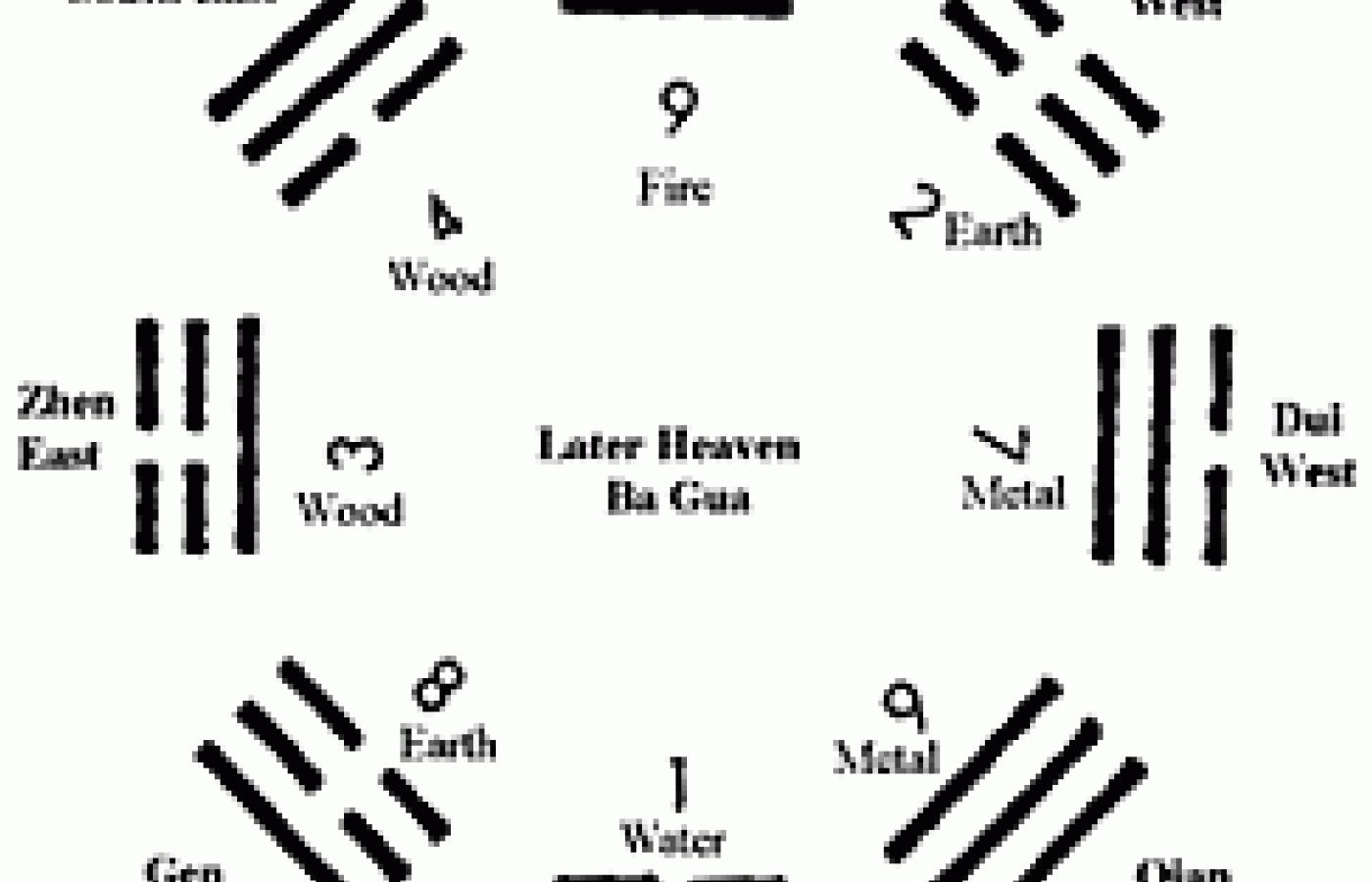Whether you accept it, avoid it or live somewhere in between, insurance coverage has become a defining issue for our profession. Patients increasingly expect to use their benefits, practitioners want to be compensated fairly for their time and expertise, and the system itself remains – at best – fragmented. The encouraging news is that coverage has expanded in meaningful ways. The challenging news is that reimbursement, across the board, remains inadequate.
Chinese Medicine and Feng Shui
An example of the beauty of the ancient Chinese view of life is that it originates in a deep, integrated and cosmological understanding of the three treasures: heaven, humanity and earth. The ancients developed a natural system for humanity to study, understand and live life. This system is the Eight Branches of Tao, and includes I Ching, acupuncture, herbal medicine, qigong (chi kung), nei dan, feng shui, astrology, and Taoist yoga.
The roots of the Eight Branches of Tao are found in the I Ching, or Book of Changes, and the Nei Jing, or Yellow Emperor's Classic of Internal Medicine. These ancient books reveal significant principles of the universe, and how they can be applied in daily life. The I Ching's building blocks were revealed in the Xia (Hsia) dynasty by the discovery of the Xian Tian Ba Gua (Early Heaven Sequence) of the Eight Trigrams by the legendary Fu Xi. In the Zhou dynasty, Wen Wang revealed the Hou Tian Ba Gua (Later Heaven Sequence of Eight Trigrams) and combined the eight gua into 64 (hexagrams), formulating the 64 figures of the I Ching. His commentaries on these, along with his son's (King Wu) line-by-line explanations, provided the foundation of the I Ching, or Zhou I as it was then called. Yin and yang were the penetrating principles behind the I Ching at this stage.
The Han dynasty was the golden age of writings on Chinese culture and Taoist arts. It was during this time that the I Ching was profoundly influenced by Taoist and Confucian thought. The Five Elements, numerology, cosmology, and guidance for society's leaders, communities and families were all incorporated into the I Ching. The Shou Gua (Ten Wings) was added to the I Ching, and is the foundational information for many elements of feng shui. The roots of the Taoist view of life begin from a shamanistic perspective; Fu Xi, Huang Di, King Yu, Wen Wang, Shen Nong, Lao Tzu and Chuang Tzu, the legendary leaders and founders of Taoist practices, lived in cultures that embraced and lived with the shaman's view as a centerpiece of life and culture. It is clear that the idea of yin feng shui (feng shui for burial sites) is based on an ancient shamanistic view of the life of souls and spirits.
Feng shui is a tool used to evaluate, remedy and promote influences that affect health, relationships and prosperity. The Eight Trigrams are an integral aspect of classical feng shui, especially their cosmological correspondences, which are found in the I Ching and the Nei Jing. The Nei Jing includes cosmology, qigong, organ theory, acupuncture, Five-Element theory, the heavenly stems, the earthly branches, the jia zi (chia tzu) cycle of 60 pairs of characters, and many other cosmological correspondences that provide the bridge between the human body, the Eight Trigrams and feng shui. Feng shui is one application of the principles found in the I Ching and Nei Jing.
This article looks at the connection between the primary principles of feng shui and those of traditional Chinese medicine, particularly those in the Nei Jing. The Nei Jing has two parts: the Su Wen, which includes philosophy, organ functions, pathologies, cosmology and life guidance, and the Ling Shu, which focuses on acupuncture.
Taoist Medical Cosmology Discussed in the Nei Jing
One way to view the "channel" system of acupuncture is to compare it with the way rivers, streams, reservoirs and underground springs function in nature, which then become a metaphor for the functions and transportation of the vital substances (qi [chi], blood, essence, body fluids) throughout the body.
The mutual resonance between heaven, human and earth (with feng shui parallels in italics) is as follows:
- Heaven is round and Earth is flat. Human's head is round and their feet are flat (like the flat and round plates of the Luo Pan, the feng shui compass).
- Heaven has the sun and moon. Humans have two eyes (yin-yang).
- Earth has nine regions. Humans have nine orifices (nine palaces of the Luo Shu).
- Heaven has four seasons. Humans have four limbs (four cardinal directions).
- Heaven has the five tones. Humans have five viscera (Five Elements).
- Heaven has the ten celestial stems. Humans have 10 fingers (astrology).
- Heaven has yin and yang. Humans have male and female (yin-yang).
- One is yang and represents heaven. Two is yin and represents earth. Humans live between heaven and earth, and are three. Three times three is nine.
- Heaven is yang and earth is yin. Sun is yang and moon is yin (often used as metaphors for yin-yang in classic texts).
In the Ling Shu, in the essay on the Nine Needles:
- One is in accordance with the laws of heaven (yang).
- Two is in accordance with the laws of earth (yin/flesh).
- Three is in accordance with the laws of humans (unity of three forces/blood).
- Four is in accordance with the laws of seasons (four seasons).
- Five is in accordance with the laws of tones (center).
- Six is in accordance with the laws of pitch pipes (for harmonizing yin-yang, four seasons and 12 channels).
- Seven is in accordance with the laws of stars (seven openings in the head, and the seven stars of the Big Dipper, the most important Taoist constellation).
- Eight is in accordance with the laws of winds (eight joints: hip, knee, shoulder, elbow).
- Nine is in accordance with the laws of regions (articulations: muscles, gates, large joints).
In the Shou Gua, in the Eight Trigrams of I Ching:
- Heaven is symbolized by three (and all odd numbers) and earth by two (and all even numbers).
- The sages perceived the changes of yin and yang and created the eight trigrams.
- The trigrams are a tool reflecting the changes of yin-yang in life. They are images expressing the successive transformations of yin-yang.
Medical Applications in the Shou Gua of I Ching
The following gua (trigrams) and their corresponding anatomical structures are the foundation components of many systems of feng shui and its ability to predict specific health conditions. The eight gua are as follows:
- Qian /Heaven functions like the head.
- Kun /Earth functions like the stomach.
- Zhen /Thunder functions like the foot.
- Xun /Wind functions like the thigh.
- Kan /Water functions like the ear.
- Li /Fire functions like the eye.
- Gen /Mountain functions like the hand.
- Dui /Lake functions like the mouth.
- Qian is Heaven, the father and Metal.
- Kun is Earth, the mother and Earth.
- Zhen is Thunder, the first/eldest son and Wood.
- Xun is Wind, the first/eldest daughter and Wood.
- Kan is Water, the second son and Water.
- Li is Fire, the second daughter and Fire.
- Gen is Mountain, the youngest son and Earth.
- Dui is Lake, the youngest daughter and Metal.

These two sections are located in the Shou Gua of the I Ching, and provide the basis for predicting potential health problems and which family members may be influenced by unfavorable feng shui conditions.
An integral aspect of the I Ching is realizing that life is the integration of numerous aspects. The I Ching offers a way of viewing, understanding and harmonizing them; feng shui offers a method to do the same thing in our living spaces.
Two major influences in feng shui are the external/internal forms and the Five-Element interactions of the gua. From a health perspective, we can look at external/internal forms and the Five Elements as activators of each gua in influencing the health of residents of a specific house or apartment.
The Ba Gua

Applying the Theory
Below is a basic example of the application of the principles discussed above; feng shui methods range from basic to very complex. More advanced methods using the I Ching are a closely held secret, but are beginning to be revealed to the public.
Two major influences in feng shui are external/internal forms and Five-Element interactions. Let's assume a large apartment complex (four times the size of the building below) was built in the East. The gua Zhen/Thunder resides in the East and relates to the feet and the eldest son. We could predict potential unfavorable foot health conditions for anybody living or spending time in the East area of the building. The eldest son would be most susceptible to these health conditions. This logic can be applied to interior forms as well.

If this building was located at the end of a cul-de-sac, with the street's flow right to the front door (in this case, the south), the street is viewed as a "sha" arrow, generating unfavorable influences. A sha is like xie, the pathogenic factors found in Chinese medicine (heat, fire, cold, wind, damp, phlegm) or something unfavorable. In this case, there could be eye problems and insomnia conditions, as the south is the li gua. If the second born daughter lives in this palace, she would be very susceptible to these conditions.
If in the northwest area there were a ceiling sloping down like the angle of the roof in building above, people spending time in this area could suffer conditions of the head and skull. This could include headaches, nasal problems, neck pain or ear conditions. If the father or male head of the household's office were located in this interior design, he would be particularly susceptible to this condition. Northwest is gua qian and relates to the head and father or male elder. If this same northwest area contained a fireplace, the father or male elder would have increased chances of the unfavorable conditions stated occurring; the northwest is gua qian, which is Metal, and Fire burns Metal, creating a greater probability of these conditions. The fireplace would have to be working for long periods of time for these conditions to manifest.
The principles of feng shui are found in the I Ching; many of the health connections are presented in the Nei Jing. The highest levels of feng shui are profound, but are based on the most basic principle: patterns of yin-yang. The two classics, I Ching and Nei Jing, amongst the oldest texts of Chinese philosophy, cosmology and medicine, are the basis for feng shui. Studying these classics will deepen our understanding of feng shui and allow us to directly experience how the ancient feng shui masters connected the Taoist view of life, particularly Chinese medicine, to the art of feng shui. Viewing feng shui from this perspective provides a profound tool for the practitioner of Oriental medicine to assist his or her patients in creating healthy living spaces.



